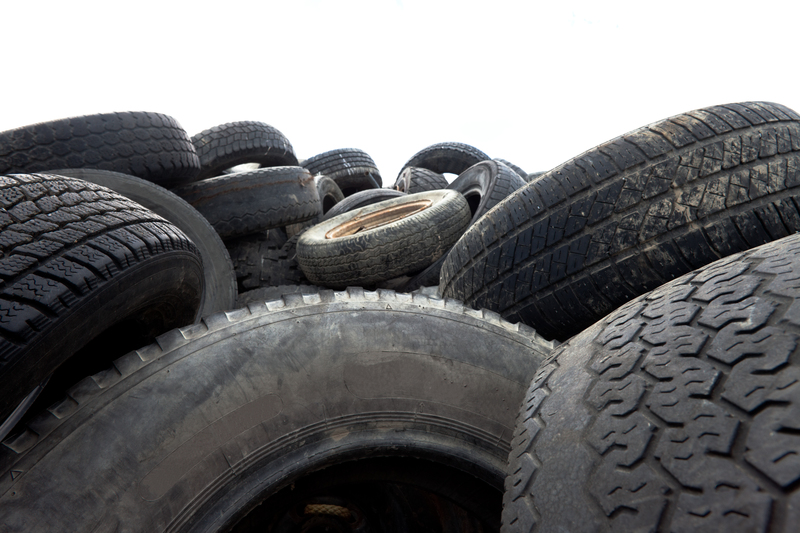Hazardous Waste Essentials: Understanding What Qualifies
Hazardous waste is a pressing concern for industries, communities, and governments around the globe. Understanding precisely what qualifies as hazardous waste is not only essential for regulatory compliance, but also for public safety and environmental protection. This comprehensive guide delves into hazardous waste essentials and provides readers with in-depth knowledge about its types, qualifications, examples, management, and guidelines. Whether you're a business owner, environmental student, or a curious reader, this article will serve as your go-to resource for understanding the ins and outs of hazardous waste.

What is Hazardous Waste and Why Does It Matter?
Hazardous waste refers to any material that is discarded and poses substantial or potential risks to public health or the environment. These wastes may be in solid, liquid, or gaseous forms and are generated from a wide variety of sources including industrial manufacturing, medical facilities, households, agriculture, and even research laboratories. Understanding what qualifies as hazardous waste is the first step towards responsible management and disposal. Proper identification ensures adherence to the law and mitigates the risks of environmental contamination and human exposure.
Why is the Classification of Hazardous Waste Important?
- Legal Compliance: Regulatory frameworks, such as the U.S. Resource Conservation and Recovery Act (RCRA), mandate strict oversight of hazardous waste.
- Public Safety: Proper identification prevents accidents, injuries, and threats to community health.
- Environmental Protection: Prevents pollution of water sources, soil, and air.
- Economic Efficiency: Correct handling reduces liability and clean-up costs.
Defining Hazardous Waste: Core Criteria and Classifications
To understand what qualifies as hazardous waste, we need to review the criteria and classification systems set by governing bodies. Hazardous waste is typically classified based on certain characteristics and specific listings.
Key Characteristics of Hazardous Waste
There are four main characteristics that qualify a waste as hazardous:
- Ignitability: Wastes that readily catch fire or have a flashpoint below 60?C (140?F). Examples include solvents, adhesives, and some cleaning agents.
- Corrosivity: Substances that can corrode metal containers or have high/low pH, such as acids and bases commonly used in industrial processes.
- Reactivity: Wastes that are unstable under normal conditions and may explode or release toxic gases, such as reactive chemicals and certain lab reagents.
- Toxicity: Materials that are harmful or fatal when ingested or absorbed, or leach dangerous substances into groundwater. Examples include pesticides, some batteries, and mercury-containing devices.
Listed Hazardous Wastes
Some wastes are defined as hazardous by their origin, content, or creation process. These are known as "listed wastes," which are further broken down into four categories according to the U.S. EPA:
- F-list: Wastes from common manufacturing processes (e.g., solvents from cleaning operations).
- K-list: Wastes from specific industry sectors, like petroleum refining or pesticide manufacturing.
- P-list: Acutely hazardous discarded commercial chemical products, such as certain pharmaceuticals and pesticides.
- U-list: Toxic discarded commercial chemicals.
The Spectrum of Hazardous Waste: Common Examples & Sources
Hazardous waste can originate from various sectors and can be surprisingly pervasive. Here is a breakdown of common hazardous waste examples and their sources:
Industrial and Manufacturing Waste
- Used solvents (paints, thinners, degreasers)
- Electroplating sludge
- Waste acids and bases
- Pesticide manufacturing residues
Medical and Laboratory Waste
- Expired medicines
- Pathological waste (sharps, lab cultures)
- Chemical reagent residues
- Mercury thermometers
Household Hazardous Waste
- Used motor oil
- Batteries (lead-acid, lithium, NiCad)
- Paints and varnishes
- Cleaning agents (bleach, ammonia-based solutions)
- Pesticides and herbicides
Electronic Waste (E-Waste)
- Computer monitors and TVs (contain lead, mercury)
- Fluorescent bulbs
- Cell phones and circuit boards
The Regulatory Landscape: Who Governs Hazardous Waste?
The proper management of hazardous waste streams is enforced by several entities around the world. In the United States, the Environmental Protection Agency (EPA) is the principal regulator, delegating certain responsibilities to state agencies. Globally, organizations such as the Basel Convention oversee the transboundary movement and disposal of hazardous waste.
Key International and National Regulations
- Resource Conservation and Recovery Act (RCRA): The main U.S. law governing hazardous and non-hazardous solid waste.
- Comprehensive Environmental Response, Compensation, and Liability Act (CERCLA or Superfund): Addresses hazardous waste site contamination cleanup.
- Basel Convention: Controls transboundary movements of hazardous wastes between nations.
- European Union Waste Framework Directive: Provides an overarching legal framework for waste management in the EU.
How Are Hazardous Wastes Identified and Determined?
Identification is a crucial step in hazardous waste management. Facilities must determine whether their waste is considered hazardous using a multi-step approach, as outlined below:
- Is the waste a solid waste? Not all solid wastes are hazardous, but hazardous waste starts with this classification.
- Is the waste excluded? Some wastes, like household waste or agricultural wastes used as fertilizer, may be specifically excluded by regulations.
- Is the waste specifically listed as hazardous? Refer to F-List, K-List, P-List, and U-List for confirmation.
- Does the waste exhibit any hazardous characteristics? Test for ignitability, corrosivity, reactivity, or toxicity.
Proper testing often involves laboratory analysis, Safety Data Sheet (SDS) review, and referencing official guidelines.
Impacts of Improper Hazardous Waste Management
Failure to appropriately identify and manage hazardous waste can have catastrophic consequences. Here are some of the common risks:
- Human Health Risks: Carcinogens, neurotoxins, and pathogens can cause serious illnesses or fatalities.
- Environmental Contamination: Toxic chemicals can leach into water supplies and soil, disrupting ecosystems.
- Legal and Financial Penalties: Non-compliance can result in heavy fines, legal actions, and cleanup liabilities.
- Occupational Hazards: Exposure during handling, storage, or transportation can endanger workers.
For these reasons, it is crucial that hazardous waste classification and disposal is performed accurately and responsibly.
Handling, Storage, and Disposal of Hazardous Waste
Effective management goes beyond identification. Here's what responsible hazardous waste management generally involves:
Safe Storage Practices
- Use approved containers resistant to the waste's qualities (e.g., acid-resistant drums).
- Clearly label containers with type and hazard level.
- Maintain secure and ventilated storage areas.
- Implement spill containment measures.
Proper Transportation
- Use permitted and trained hazardous waste transporters.
- Follow precise documentation protocols (manifests) for tracking.
Disposal and Treatment Options
- Incineration: Effective for organic hazardous wastes, minimizing volume and neutralizing toxicity.
- Secure Landfilling: Designed with liners and leachate collection to prevent contamination.
- Chemical Neutralization: Used for acids, bases, and other reactive chemicals.
*Note: Never dispose of hazardous waste in regular trash, drains, or outdoors.*
Best Practices for Businesses and Individuals
To ensure full compliance and safety, follow these best practices for handling hazardous waste:
- Regularly train staff on hazardous waste identification, storage, and emergency procedures.
- Keep accurate records for the generation, storage, transportation, and final disposal of hazardous waste.
- Conduct routine facility audits to detect unknown or mismanaged waste materials.
- Develop an emergency response plan to address spills, exposures, or fires promptly.
- Engage with licensed hazardous waste contractors for specialized disposal or treatment.

Common Misconceptions about Hazardous Waste
- Myth: All hazardous waste is easily identifiable.
Fact: Some hazardous waste (like e-waste or pharmaceuticals) is not obviously dangerous but is classified as hazardous by regulation. - Myth: Small quantities are not hazardous.
Fact: Even minuscule amounts of P-list wastes can be acutely hazardous. - Myth: Household hazardous waste is not regulated.
Fact: While less regulated than industrial waste, household hazardous waste should still be handled at special collection sites.
Conclusion: The Importance of Understanding Hazardous Waste Qualifications
In summary, understanding what qualifies as hazardous waste is a fundamental responsibility for businesses, institutions, and households alike. The importance goes far beyond regulatory compliance; it impacts our health, environment, and safety. With a clear definition, awareness of hazardous characteristics, knowledge of common sources, and adherence to proper handling processes, individuals and organizations can contribute to a cleaner and safer world.
For further information, consult local environmental agencies, the EPA guidelines, or international conventions such as the Basel Convention. Remember, informed actions today lay the foundation for a healthier tomorrow.
Key Takeaways
- *Hazardous waste* is identified by characteristics such as ignitability, corrosivity, reactivity, and toxicity.
- Both listed and characteristic wastes must be managed according to strict regulations.
- Proper management helps safeguard human health and preserve environmental quality.
Understanding hazardous waste essentials is not just for industry insiders--it's a shared responsibility that affects us all.